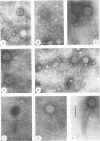Abstract
Sixty-three strains of lactic streptococci isolated from commercial lactic streptococcal starter cultures were examined for lysogeny by treatment with ultraviolet light or mitomycin C. After treatment with the inducing agent, all strains, whether or not they lysed, were examined for evidence of phage release by electron microscopy. Thirty-eight strains yielded intact phages or phage particles of varying morphology. All the temperate phages had isometric heads and noncontractile tails; some had collars and structurally distinctive baseplates. Indicator host strains were found for phages induced from seven different strains. Three strains that released phages spontaneously yielded titers of 10(3) to 10(4) plaque-forming units per ml. When strains that spontaneously released phages were grown in mixed culture with indicator strains, increased phage titers of 10(6) to 10(7) plaque-forming units per ml were observed. These findings indicate that lysogenic lactic streptococcal strains may serve as a reservoir for phages that attack sensitive strains in mixed- or multiple-strain lactic starter cultures.
Full text
PDF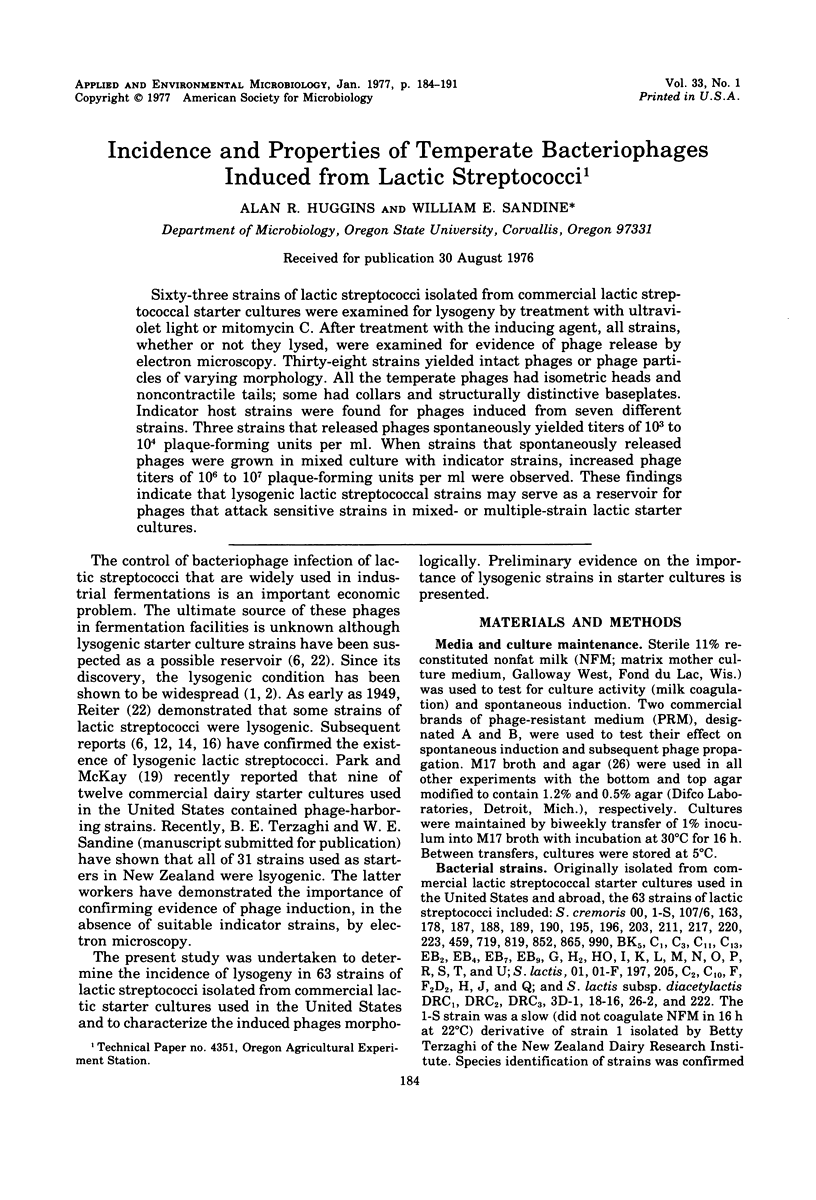
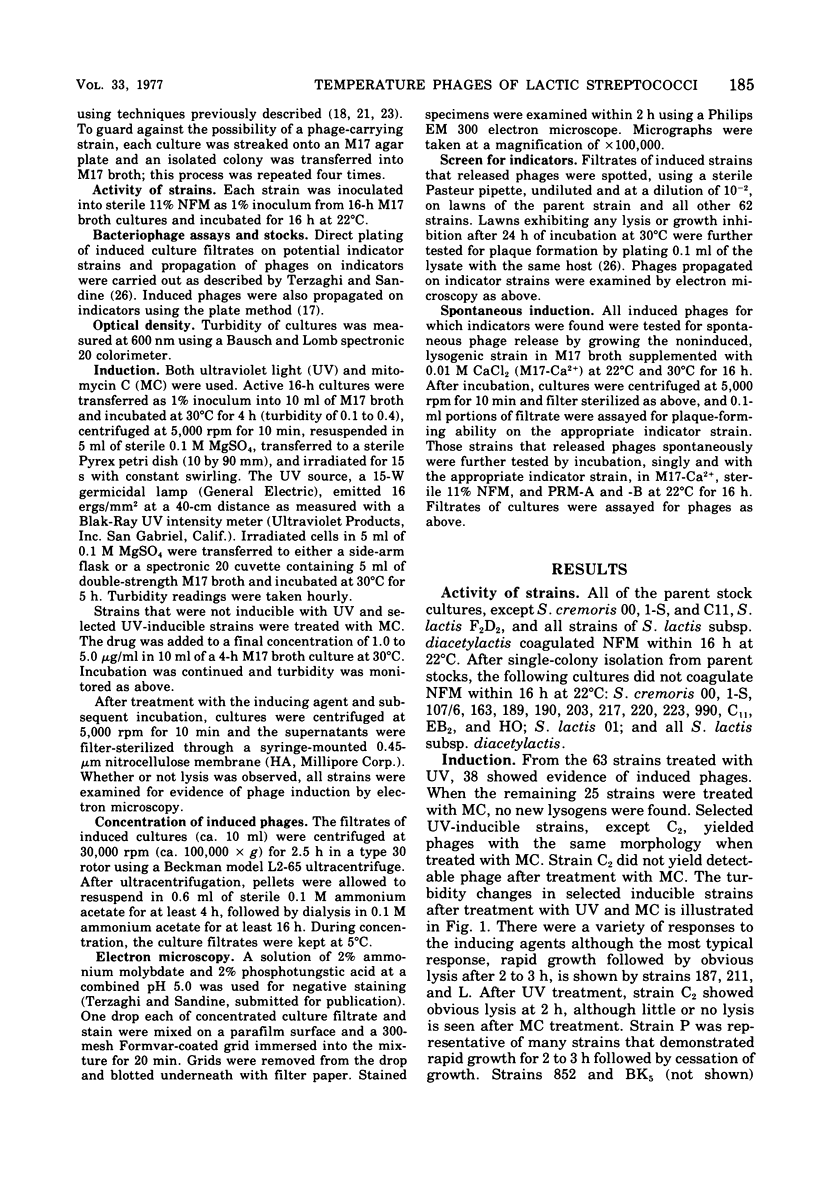
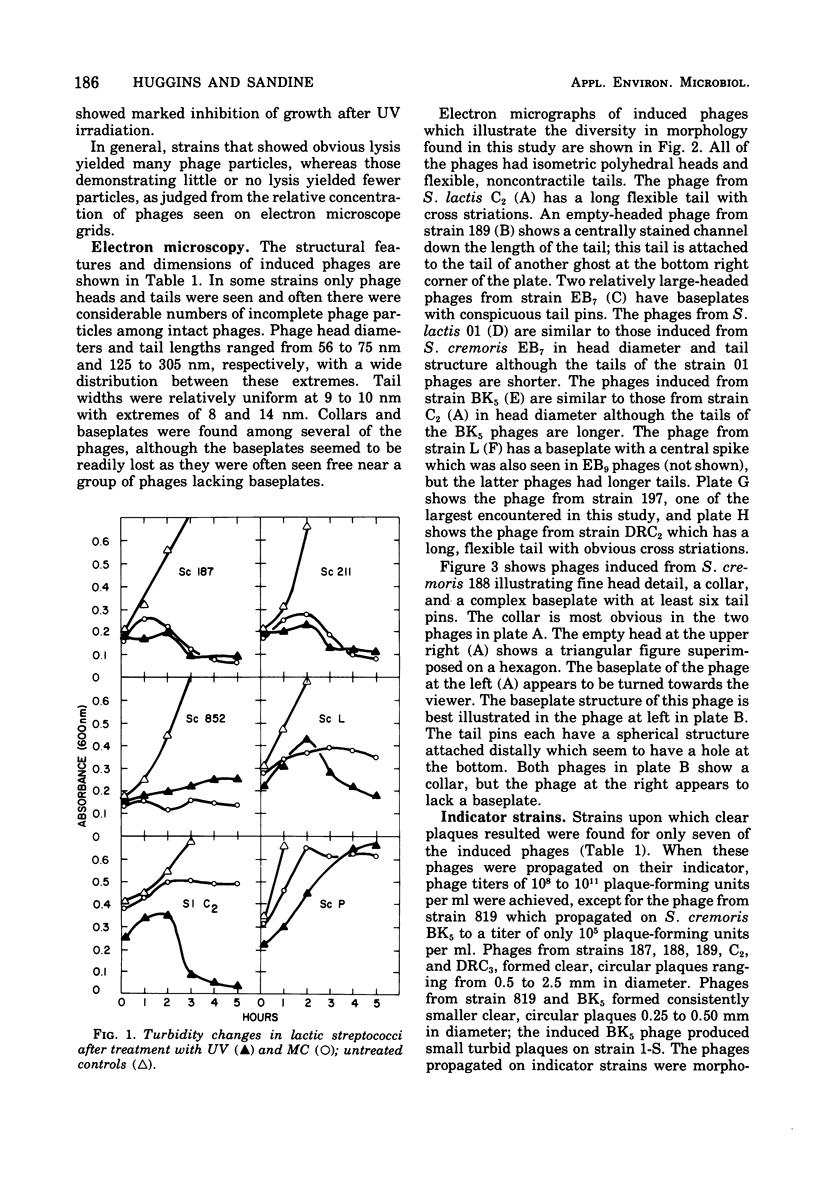
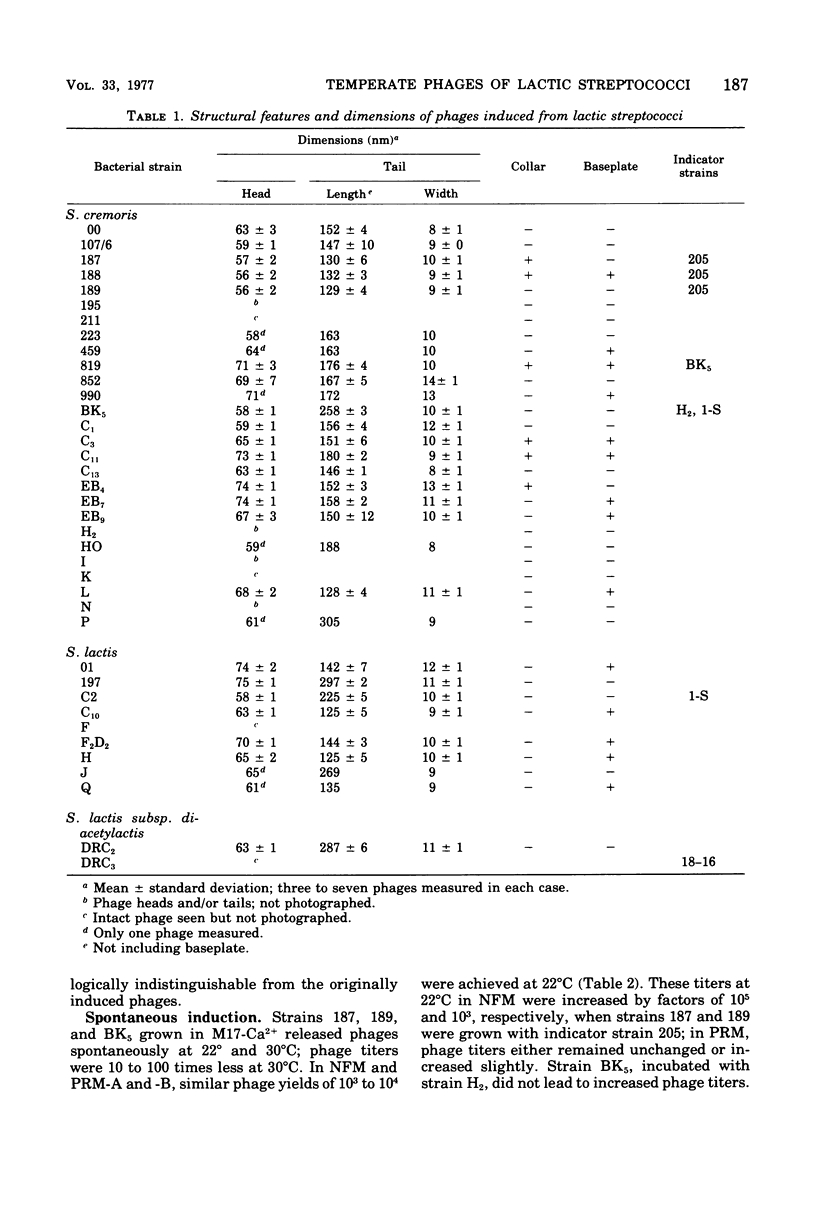
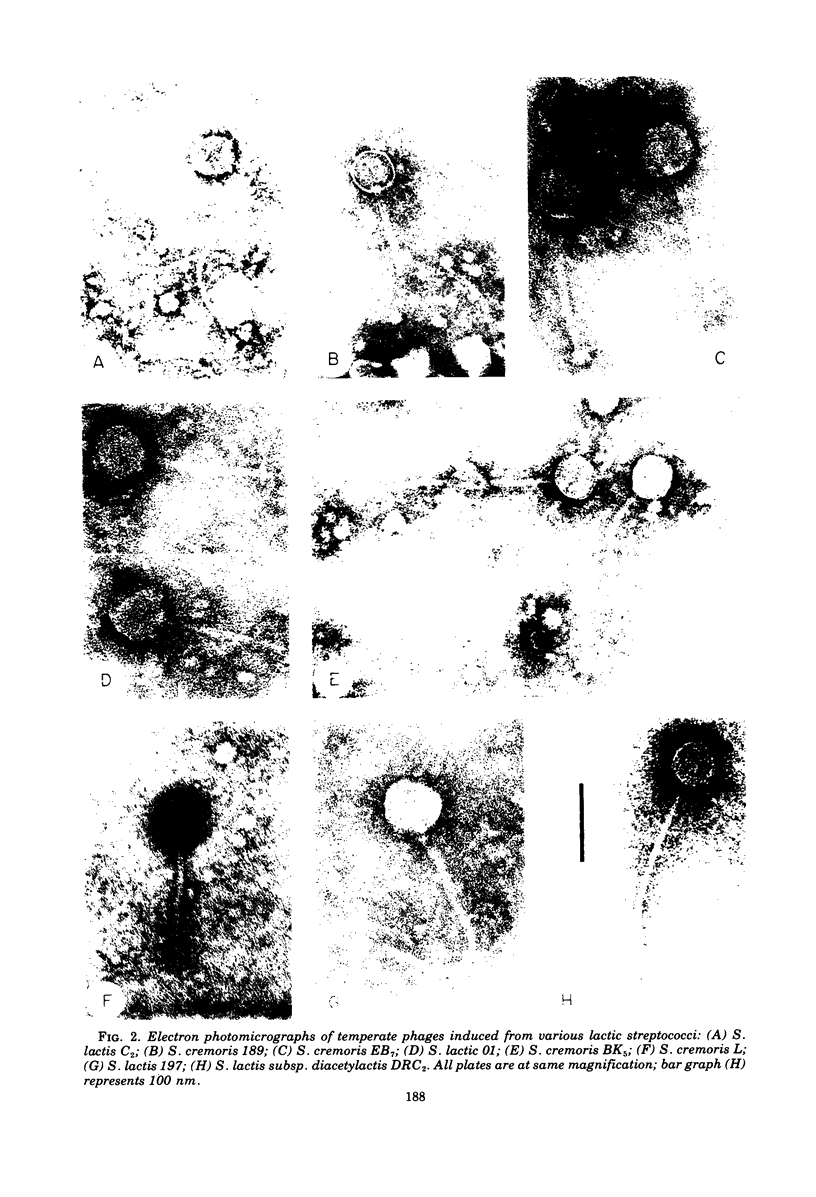
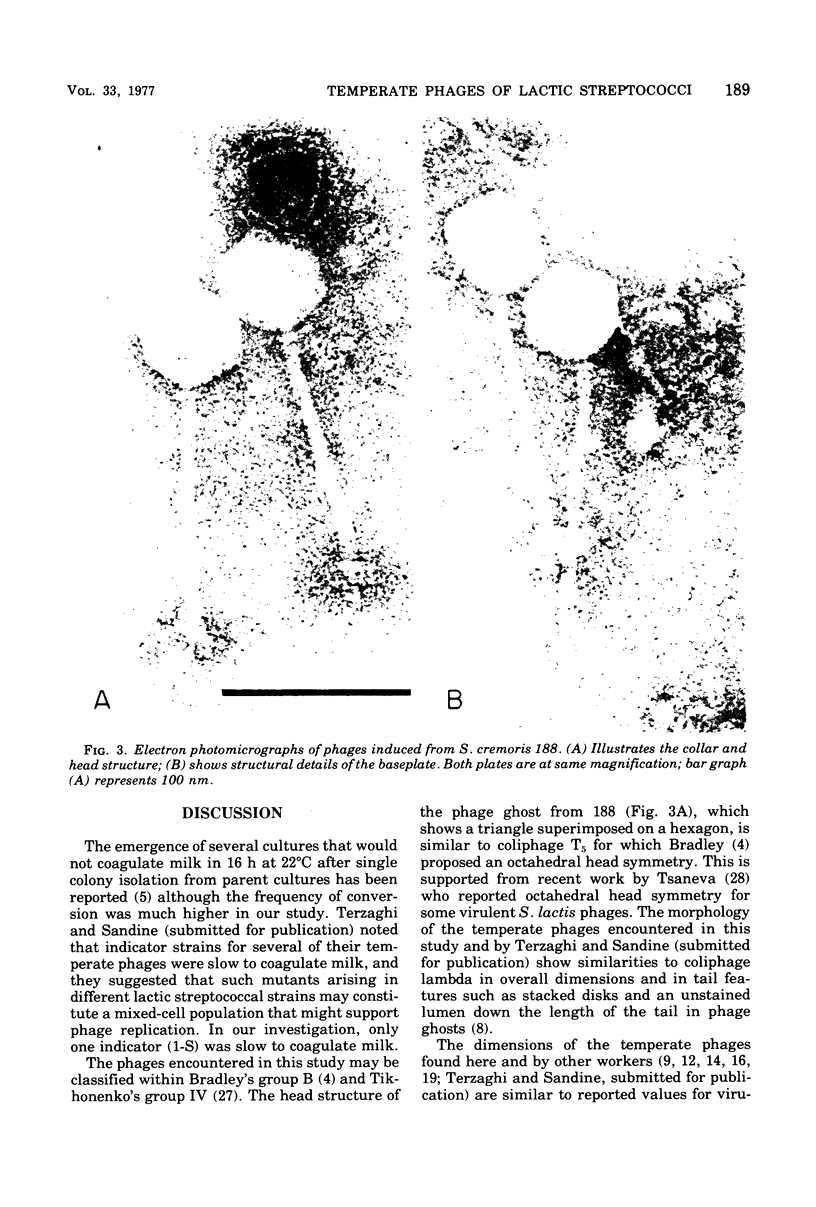
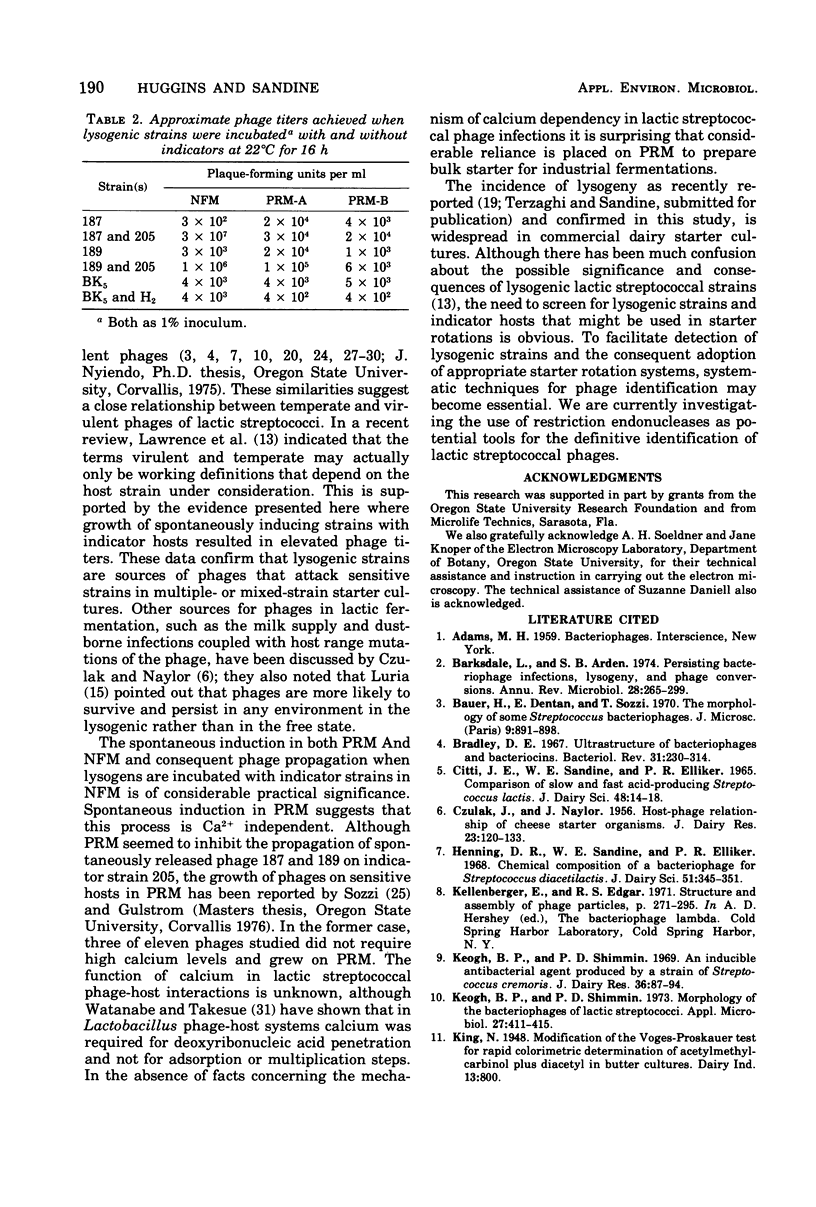
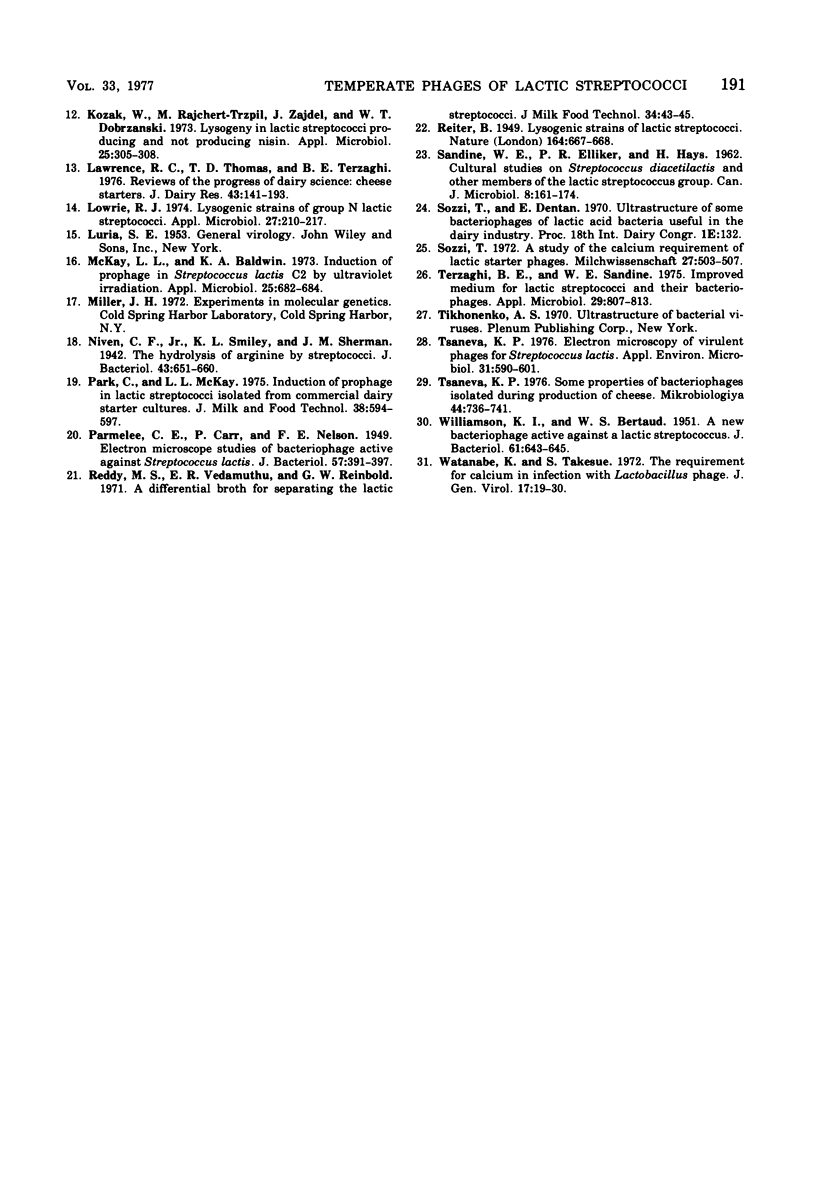
Images in this article
Selected References
These references are in PubMed. This may not be the complete list of references from this article.
- Barksdale L., Arden S. B. Persisting bacteriophage infections, lysogeny, and phage conversions. Annu Rev Microbiol. 1974;28(0):265–299. doi: 10.1146/annurev.mi.28.100174.001405. [DOI] [PubMed] [Google Scholar]
- Bradley D. E. Ultrastructure of bacteriophage and bacteriocins. Bacteriol Rev. 1967 Dec;31(4):230–314. doi: 10.1128/br.31.4.230-314.1967. [DOI] [PMC free article] [PubMed] [Google Scholar]
- CITTI J. E., SANDINE W. E., ELLIKER P. R. COMPARISON OF SLOW AND FAST ACID-PRODUCING STREPTOCOCCUS LACTIS. J Dairy Sci. 1965 Jan;48:14–18. doi: 10.3168/jds.s0022-0302(65)88152-8. [DOI] [PubMed] [Google Scholar]
- Henning D. R., Sandine W. E., Elliker P. R. Chemical composition of a bacteriophage for Streptococcus diacetilactis. J Dairy Sci. 1968 Mar;51(3):345–351. doi: 10.3168/jds.S0022-0302(68)86988-7. [DOI] [PubMed] [Google Scholar]
- Keogh B. P., Shimmin P. D. Morphology of the bacteriophages of lactic streptococci. Appl Microbiol. 1974 Feb;27(2):411–415. doi: 10.1128/am.27.2.411-415.1974. [DOI] [PMC free article] [PubMed] [Google Scholar]
- Kozak W., Rajchert-Trzpil M., Zajdel J., Dobrzański W. T. Lysogeny in lactic streptococci producing and not producing nisin. Appl Microbiol. 1973 Feb;25(2):305–308. doi: 10.1128/am.25.2.305-308.1973. [DOI] [PMC free article] [PubMed] [Google Scholar]
- Lowrie R. J. Lysogenic strains of group N lactic streptococci. Appl Microbiol. 1974 Jan;27(1):210–217. doi: 10.1128/am.27.1.210-217.1974. [DOI] [PMC free article] [PubMed] [Google Scholar]
- McKay L. L., Baldwin K. A. Induction of prophage in Streptococcus lactis C2 by ultraviolet irradiation. Appl Microbiol. 1973 Apr;25(4):682–684. doi: 10.1128/am.25.4.682-684.1973. [DOI] [PMC free article] [PubMed] [Google Scholar]
- Niven C. F., Smiley K. L., Sherman J. M. The Hydrolysis of Arginine by Streptococci. J Bacteriol. 1942 Jun;43(6):651–660. doi: 10.1128/jb.43.6.651-660.1942. [DOI] [PMC free article] [PubMed] [Google Scholar]
- Parmelee C. E., Carr P. H., Nelson F. E. ELECTRON MICROSCOPE STUDIES OF BACTERIOPHAGE ACTIVE AGAINST STREPTOCOCCUS LACTIS. J Bacteriol. 1949 Apr;57(4):391–397. doi: 10.1128/jb.57.4.391-397.1949. [DOI] [PMC free article] [PubMed] [Google Scholar]
- SANDINE W. E., ELLIKER P. R., HAYS H. Cultural studies on Streptococcus diacetilactis and other members of the lactic Streptococcus group. Can J Microbiol. 1962 Apr;8:161–174. doi: 10.1139/m62-021. [DOI] [PubMed] [Google Scholar]
- Terzaghi B. E., Sandine W. E. Improved medium for lactic streptococci and their bacteriophages. Appl Microbiol. 1975 Jun;29(6):807–813. doi: 10.1128/am.29.6.807-813.1975. [DOI] [PMC free article] [PubMed] [Google Scholar]
- Tsaneva K. P. Electron microscopy of virulent phages for Streptococcus lactis. Appl Environ Microbiol. 1976 Apr;31(4):590–601. doi: 10.1128/aem.31.4.590-601.1976. [DOI] [PMC free article] [PubMed] [Google Scholar]
- Tsaneva K. P. O nekotorykh svoistvakh bakteriofagov, vydelennykh pri proizvodstve brynzy. Mikrobiologiia. 1975 Jul-Aug;44(4):736–741. [PubMed] [Google Scholar]
- WILLIAMSON K. I., BERTAUD W. S. A new bacteriophage active against a lactic streptococcus. J Bacteriol. 1951 May;61(5):643–645. doi: 10.1128/jb.61.5.643-645.1951. [DOI] [PMC free article] [PubMed] [Google Scholar]
- Watanabe K., Takesue S. The requirement for calcium in infection with Lactobacillus phage. J Gen Virol. 1972 Oct;17(1):19–30. doi: 10.1099/0022-1317-17-1-19. [DOI] [PubMed] [Google Scholar]



